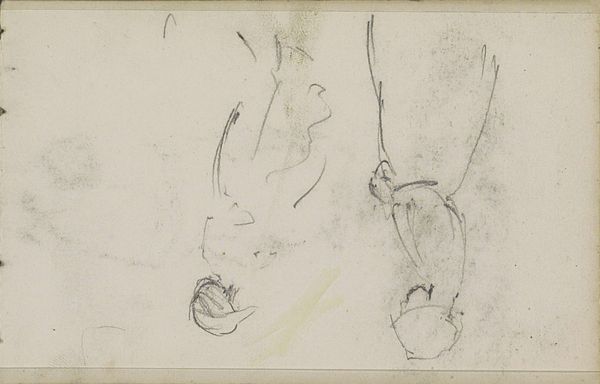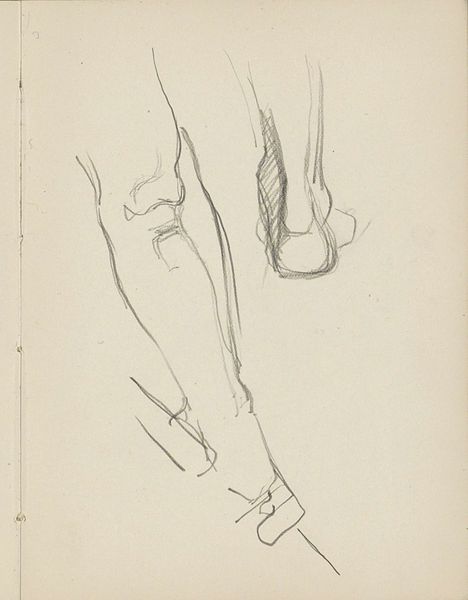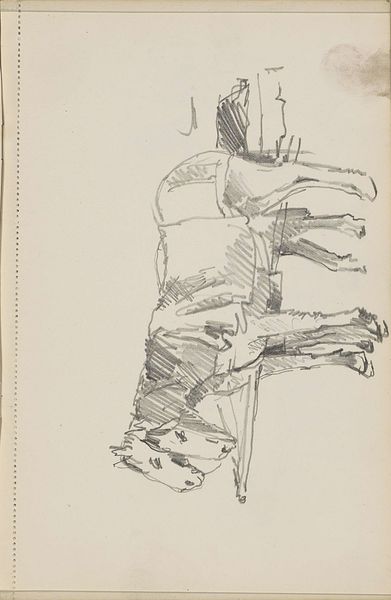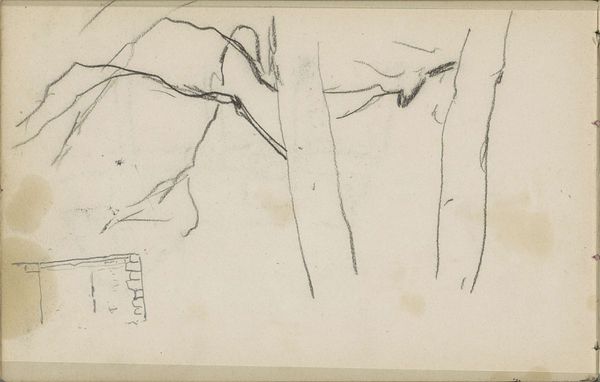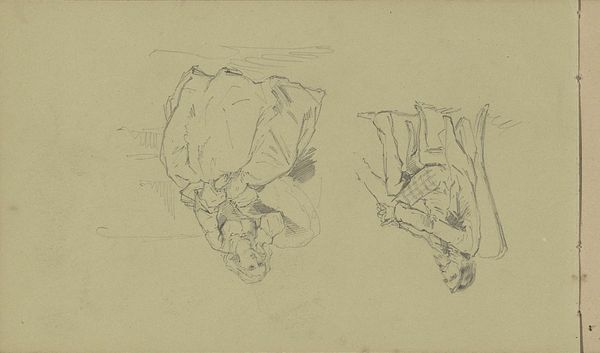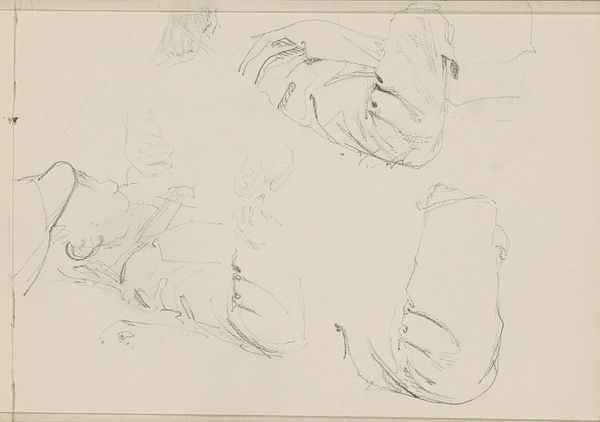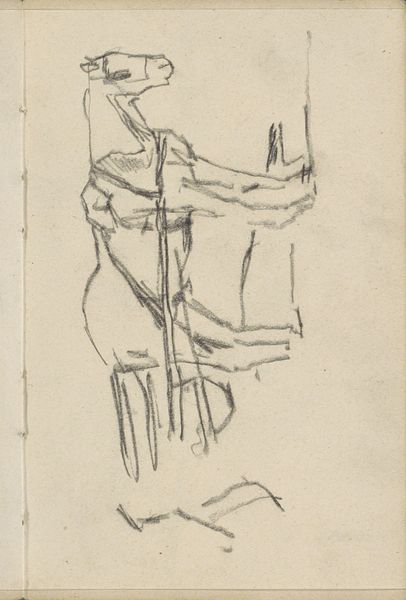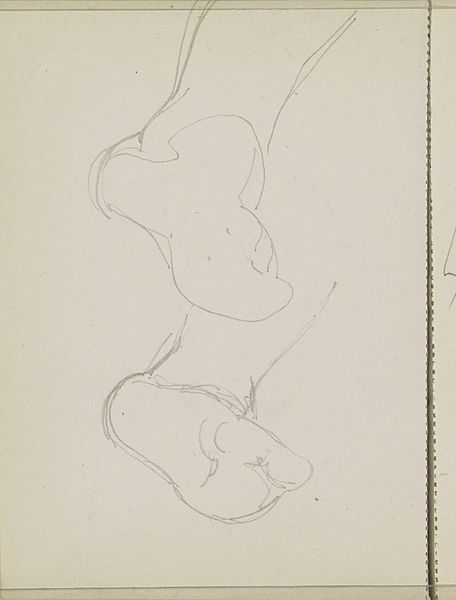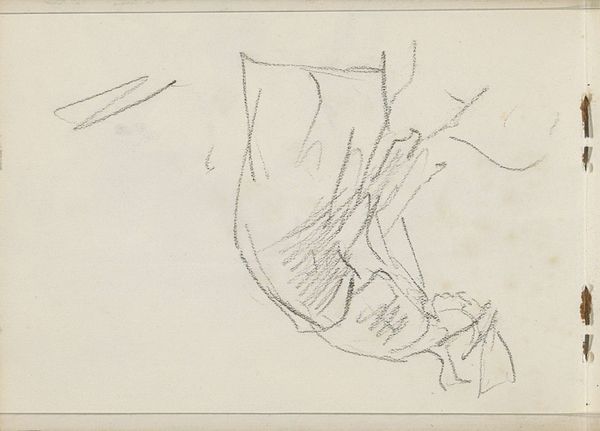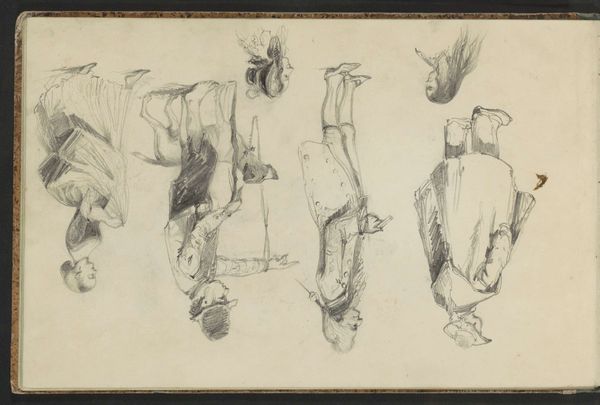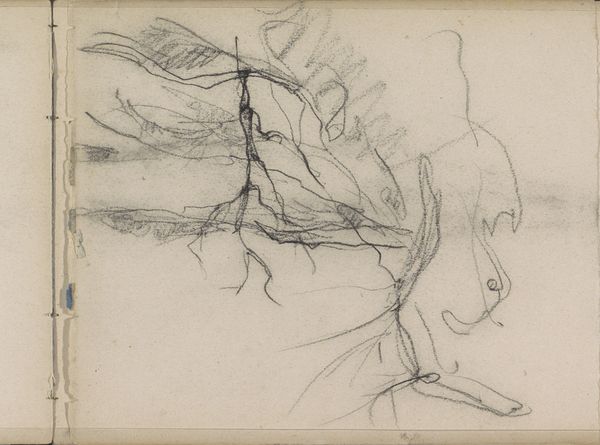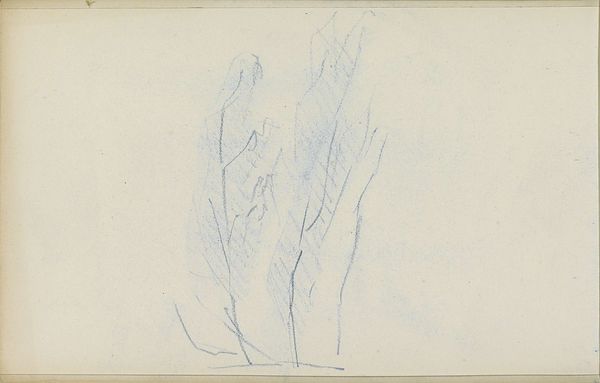
drawing, pencil
#
portrait
#
drawing
#
amateur sketch
#
light pencil work
#
pencil sketch
#
figuration
#
personal sketchbook
#
idea generation sketch
#
sketchwork
#
ink drawing experimentation
#
pen-ink sketch
#
pencil
#
sketchbook drawing
#
genre-painting
#
realism
#
initial sketch
Copyright: Rijks Museum: Open Domain
Curator: Here we have a drawing titled "Jongen zittend op een stoel en een lezende jongen," which translates to "Boy sitting on a chair and a reading boy." The artist, Bramine Hubrecht, likely created this sketch between 1865 and 1913. It's rendered in pencil. What strikes you first about it? Editor: It feels like a fleeting observation, almost accidental. The light pencil work suggests a candid moment, an artist quickly capturing two figures in repose. There's a rawness to the lines, like a thought caught mid-stream. Curator: I think that’s astute. We might consider this work through the lens of social class and leisure during the late 19th century. The act of reading, the availability of leisure time to simply sit… These weren't universally accessible. Editor: Absolutely, the symbol of the book has a rich history and cultural significance. Even the pose—slouching, seemingly absorbed—suggests a level of comfort and privilege. The very act of reading transforms the figure into something aspirational, perhaps. Curator: The style of dress, too, tells a story. We don't have elaborate detail, but there's enough to indicate a certain degree of formality, reinforcing class distinctions within Dutch society at the time. Editor: Yet there’s also a sense of intimacy in the sketch. The artist seems drawn to capture something ordinary, something almost domestic. Curator: Precisely. It complicates the reading, doesn't it? We see social structures reflected, but also a human connection—a desire to record everyday life. This piece offers us an insight to that period in time. Editor: This invites reflection. The symbol of the reader and the watcher are as potent today, in a world saturated with images, as they were at the time the sketch was created. The question is, what do they symbolize for us? Curator: And how does our own context—our present social and political landscape—shape our understanding of it? That, I believe, is the critical question. Editor: Indeed. This sketch reminds us of the enduring power of visual symbols, even in their most unassuming forms. Curator: A simple sketch, yet layered with socio-political meaning. A fascinating glimpse into another time.
Comments
No comments
Be the first to comment and join the conversation on the ultimate creative platform.
